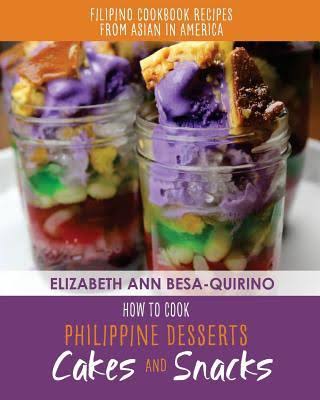One Can Never Have Enough of Filipino Food
/Book Review:
My Mother’s Philippine Recipes
Elizabeth Ann Quirino
2017
My Mother’s Philippine Recipes
By the time I finished, I was craving Filipino food big time. That’s because Quirino’s featured dishes and their accompanying pictures were dizzyingly seductive and delicious. Not to mention the sumptuous background stories about the culinary skills of her beautiful mother, Lulu Reyes-Besa, and the farming avocation of her father Gualberto Besa, which ensured fresh ingredients all the time. And then there’s the very social childhood of Quirino and her sister, Isabel, a childhood that saw a steady stream of visitors to their home on the main highway of Tarlac that in turn meant the constant and steady hum and aroma of Kapampangan cooking in the kitchen where their mother presided.
The Besa home in Tarlac, Tarlac was a fascinating place. As Quirino writes, “Our home was centrally located along the highway midway between Manila and Baguio, the summer capital of the country. The house stood exactly three hours away from Manila and three hours to Baguio. To friends and family, it was the Besa home in Tarlac, or simply the ‘home along the highway.’ If you stopped by our place back in the 1960s, my mom would be sure to cook up a feast for you. Our home wasn’t an ordinary stop where you drove through for fast food; it was a place for a two-hour, multicourse feast of my mom’s best home-cooked dishes. Most of the vegetables and produce she used came from our backyard or farm, from crops grown by my dad.”
Today’s trendy farm-to-table concept has nothing on the Besa household.
Quirino includes 30 of her mother’s recipes in her book (or technically 29, since the recipe for Salted Egg-flavored Potato Chips is her version of one of the most popular snack foods in the Philippines today). Grouped into six sections (soups and appetizers, vegetables, rice and noodles, fish and seafood, meats, and desserts), the recipes include a combination of simple, everyday fare like Sinigang na Baka with Lemongrass, Binagoongan Talong and of course, Chicken and Pork Adobo, along with some elaborate pang-fiesta dishes, such as Paella Valenciana, Lobster Thermidor, Embutido Kapampangan, Spanish Cocido with Eggplant Dip and Tomato Sauce, and Kare-Kare and Begucan. Begucan is bagoong guisado (sautéed shrimp paste) Kapampangan style.
The desserts, of course, are fitting denouements to a perfect meal: Coconut Leche Flan, Mango Tempura, Pastillas de Leche and Ube, Ube Puto-Leche Flan and the much-craved-for Kapampangan delicacy, Tibok-Tibok, a “luscious, creamy milk pudding enhanced with coconut milk curds called latik.” In her parents’ home, carabao milk was used to make tibok-tibok (literally “heartbeat”) but Quirino has found a fitting substitute – goat’s milk – sold in cans or cartons in US supermarkets.
[These five dessert recipes give just a taste of Quirino’s other book, How To Cook Philippine Desserts: Cakes and Snacks, which also features 30 recipes grouped into rice cakes and coconut sweets, desserts and pastries, and special occasion sweets and beverages.]
How To Cook Philippine Desserts: Cakes and Snacks
Which brings me to what I value most in Quirino’s recipes – having lived in the United States for decades and having succeeded in creating the same kind of food-focused atmosphere she was raised in (her two sons are just as passionate about cooking as she is), Quirino naturally had to scrounge around for good substitutes of ingredients not available here. Thus her recipes are expat-friendly, adjusted to the realities of supplies and climactic conditions outside the Philippines.
Quirino, as you know, is Positively Filipino’s culinary correspondent who has written numerous articles on up-and-coming chefs and restaurants, and has shared so many of her recipes in our Happy Home Cook section. This whole month, she exclusively plans Christmas meals that readers can mix and match, according to their inclination and their abilities.
Her culinary credentials are formidable: member of the International Association of Culinary Professions and the Culinary Historians of the Philippines, book author and award-winning essayist.
More importantly for me -- forever a novice cook – she has been a lifesaver, my go-to person whenever I’m at my wit’s end trying to think of what I can make for dinner. Some of her recipes are now part of our regular menu. Not only are they simple and easy to make, but their timpla (combination of flavors) is just the right mix for our still very Filipino palate.
Still looking for the perfect Christmas gifts? You can’t go wrong with Elizabeth Ann Quirino’s cookbooks on Amazon.
My Mother’s Philippine Recipes (Filipino Cookbook Recipes from Asian in America), 2017
How To Cook Philippine Desserts: Cakes and Snacks, 2016




